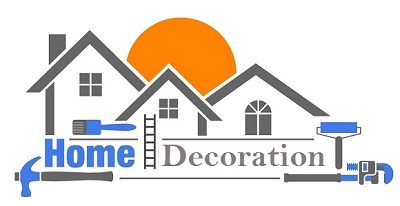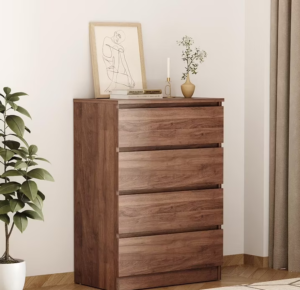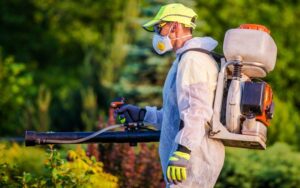A carpet pad is a material placed under carpets to provide support, cushioning, and insulation to the carpet. Incorrect installation or maintenance of carpet pads can contribute to poor indoor air quality and potentially cause health problems.
In this article, we will discuss how carpet padding can make you sick and cause health problems. Additionally, we will explain how to clean your carpet correctly so that it will last for a long time while preventing any potential health issues.
Can Carpet Padding Make You Sick?
There is a potential issue with carpet pads because they can trap allergens, dust, and other particles that can cause respiratory problems and allergic reactions. Without regular cleaning, these particles can build up and create a breeding ground for bacteria, mould, and mildew, causing breathing problems, skin irritation, and headaches.
Chemicals such as volatile organic compounds (VOCs) may also be present in some carpet pads, and they may cause irritation and other health issues when released into the air.
The best way to minimise exposure to these chemicals is to choose carpet pads with low VOCs and make sure they are installed correctly.
The Hidden Dangers of Carpet Padding
Using recycled foam products in some carpet pads causes some environmental researchers to worry. The reason is that flame-retardants were added to foam padding before a 2005 ban.
These chemicals are called PBDEs – compounds that cause problems with the hormone system and brain development. As they move slowly into the carpets, they bind to the dust particles, and eventually, they end up spreading into the air.
PBDEs are released into the air and inhaled when stepping on the carpets or vacuuming them. It’s a prolonged process, but they lead to severe consequences over the long term.
Families with infants and children should be cautious when buying such pads because their kids spend many hours on the floor, and their immune system is not as strong as those of adults. Determining whether yours contains PBDEs is easier if you purchase a carpet pad for your house.
How to Clean and Maintain Carpet Pads
Poor indoor air quality can result from carpet underlays that are not installed or maintained properly. Choose high-quality carpet pads and clean them regularly to prevent health issues. Here are some tips on how to maintain and clean carpet padding:
Use Eco-Friendly Carpet Cleaning To Minimise Dust
How can you do it? Use a vacuum cleaner equipped with a HEPA filter to vacuum your carpets at least twice a week. It’s a specially designed filter to remove 99.97% of fine particles, such as dust. Pay extra attention to corners, tiles, and under the furniture. Of course, proper maintenance is a must. You need to clean the bag and the filter after every use. Quality HEPA-equipped vacuums cost around $500, but they are worth the money.
It is best to deep clean your carpet at least twice a year. When choosing carpet cleaning services, you should ensure that they use steam carpet cleaning or a chemical-free cleaning method. You can find carpet cleaning services at a reasonable price, so you won’t have too much trouble affording them. Some carpet cleaning services use environmentally friendly products, which are the best option. So ask your cleaners what products they use.
Throw the Old Carpet Pad and Buy a Non-Toxic One
If you decide to replace your old carpet underlay with a new one, choose carpet padding made from 100% new materials and certified for low VOC emissions. Usually, carpet pad manufacturers should list the information concerning VOC emissions, materials used (new or recycled), and the absence of PBDEs or other hazardous materials.
Non-toxic carpet pads include:
- slab rubber;
- 100% sheep wool and natural fibres, such as jute, felt, and horsehair;
- frothed polyurethane (similar to memory foam);
Manufacturers of wool carpet pads say that they absorb odours, VOCs, and formaldehyde, which results in improved indoor air quality. The only con is that they are not as soft as the others, but in the end, health is more important than anything else.
It will cost you between $7 and $15 per square yard to remove and replace the old carpet pads with new ones.
Consider Carpet Alternatives
Carpeting can be very dangerous when the dust binds with hazardous chemicals besides fire retardants. That’s why it would be wise to consider replacing the carpets and padding with more natural alternatives that can reduce dust levels to a minimum. Good green flooring options include linoleum, cork, solid wood or ceramic tile.
How Often Should You Replace Carpet Underlay?
Generally, carpet pads are intended to last up to 25 years. This is a best-case scenario, though. The original quality and thickness of the product, the materials from which it is made, the level of daily foot traffic, and its exposure to heat and moisture can affect its lifespan.
You should replace your carpet underlay as soon as possible when you notice that the underlay feels lumpy or uneven, there is an unpleasant odour, or there are signs of mould or mildew. You can extend the life of your carpets by vacuuming regularly and having them professionally cleaned.
Underlay for carpets, especially rubber-based products, is prone to crumbling and harbouring dust and dirt. The dirt on your old carpet can be transferred to your new carpet, making it look worn out and old.
What Are the Benefits of Carpet Padding?
Carpet pads protect the hard floor surfaces underneath the carpet, and most warranties are void without them. You can also protect your carpet against shedding from foot traffic and heavy furniture by padding it.
A carpet without padding would scratch the floor beneath it. With the right carpet pad, you will be able to extend the lifespan of your flooring. Often, carpet padding is added to tile floors for additional cushioning and insulation. A cushioned layer on your floor can trap air, preventing your home from losing heat and reducing energy bills.
Bottom Line on Carpet Pads
- Carpet pads provide support, cushioning, and insulation to carpets;
- Health problems can occur when carpet pads are installed or maintained incorrectly;
- Maintain a healthy home with high-quality carpet pads and regular vacuuming;
- At least twice a year, you should professionally clean your carpet;
- As an alternative to carpeting, linoleum, cork, solid wood, or ceramic tile are all excellent options.






More Stories
The Common Causes of Water Leaks in Air Conditioners
Versatile and Functional: Multi-Purpose Sitting Stools for Every Room
The most impressive things about the MDF architraves for sale online